A giant marsupial resembling a giant wombat was wandering the grasslands of Australia, 80,000 years ago. That's 74,000 years before Creationists believe Earth was magically conjured up from nothing with magic words.
The species finally went extinct about 25,000 years ago, and so co-existed for several thousand years with the first human inhabitants of Australia - the existence of whom is another major embarrassment for Creationists, but that's another story.
From Australian Museum:
Evolutionary relationshipsIn the following article, reprinted from The Conversation under a Creative Commons licence, some of the team who identified the fossil remains, describe how they were identified and their significance in understanding the history of Australian fauna. The article is reformatted for stylistic consistency. The original can be read here:
Diprotodontids first appear in the late Oligocene, about 25 million years ago. These early diprotodontids were probably descended from late Oligocene to early Miocene wynyardiids (small marsupials with a dentition intermediate between that of possums and diprotodontids) and were about the size of sheep.
The subfamily Diprotodontinae, including Diprotodon optatum, are a Pliocene-Pleistocene group. Diprotodon may have evolved from the Pliocene diprotodontine Euryzygoma during the late Pliocene. A recent study based on dentition has found that there is just a single variable species of Diprotodon, Diprotodon optatum (Price 2008).
Exact reasons for the extinction of Diprotodon remain unclear. It seems to have co-existed with Aboriginal people for over 20,000 years, so the 'blitzkrieg' model (extinction upon the arrival of humans) does not hold for Diprotodon. Human activity may have had an effect, either through habitat change ('firestick farming') or perhaps via a slow decrease in numbers through selected hunting of juveniles. Aboriginal people did not have 'big game' weapons, and most likely did not target adult Diprotodon. Climate change may have also been a significant factor. During the Pleistocene, Australia experienced droughts that were much worse than today's, and much of inland Australia was barren, inhospitable and waterless.

For the first time ever, we have a complete skull description of a true fossil giant wombat
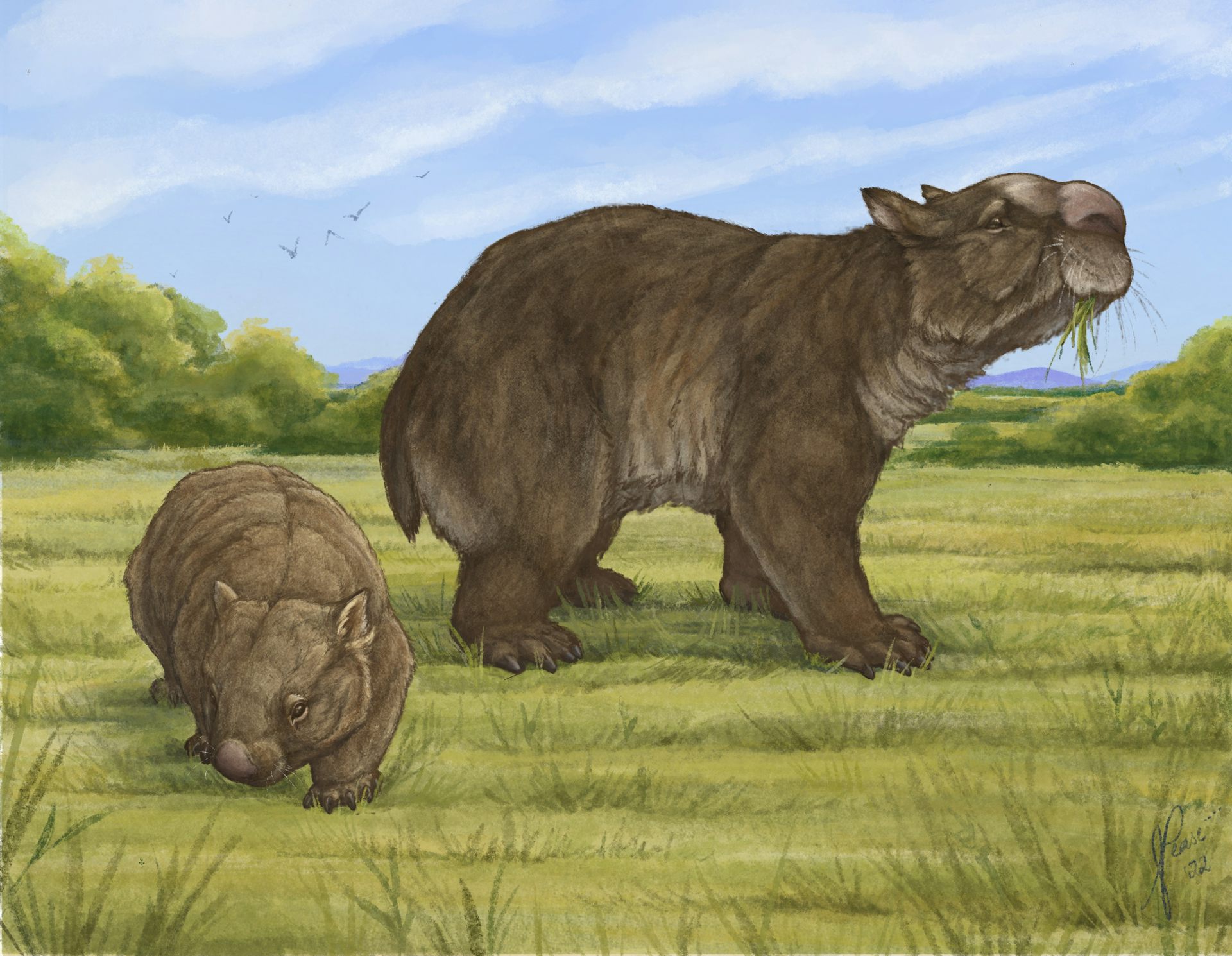
Ramsayia reconstruction (r) next to a modern wombat.
Credit: Eleanor Pease, CC BY-NC
The place we call Australia today was in many ways vastly different 80,000 years ago.
Perhaps nowhere is this more evident than in the animals that would have roamed the plains and inhabited the forests of the continent. Huge marsupials ruled the land, including giant kangaroos, giant koalas and giant wombats.
In a study published today in Papers in Palaeontology, we describe the most complete skull of one of these giant wombats, a hitherto poorly known species called Ramsayia magna. This marsupial bore more than a passing resemblance to a giant beaver crossed with a modern hairy-nosed wombat.
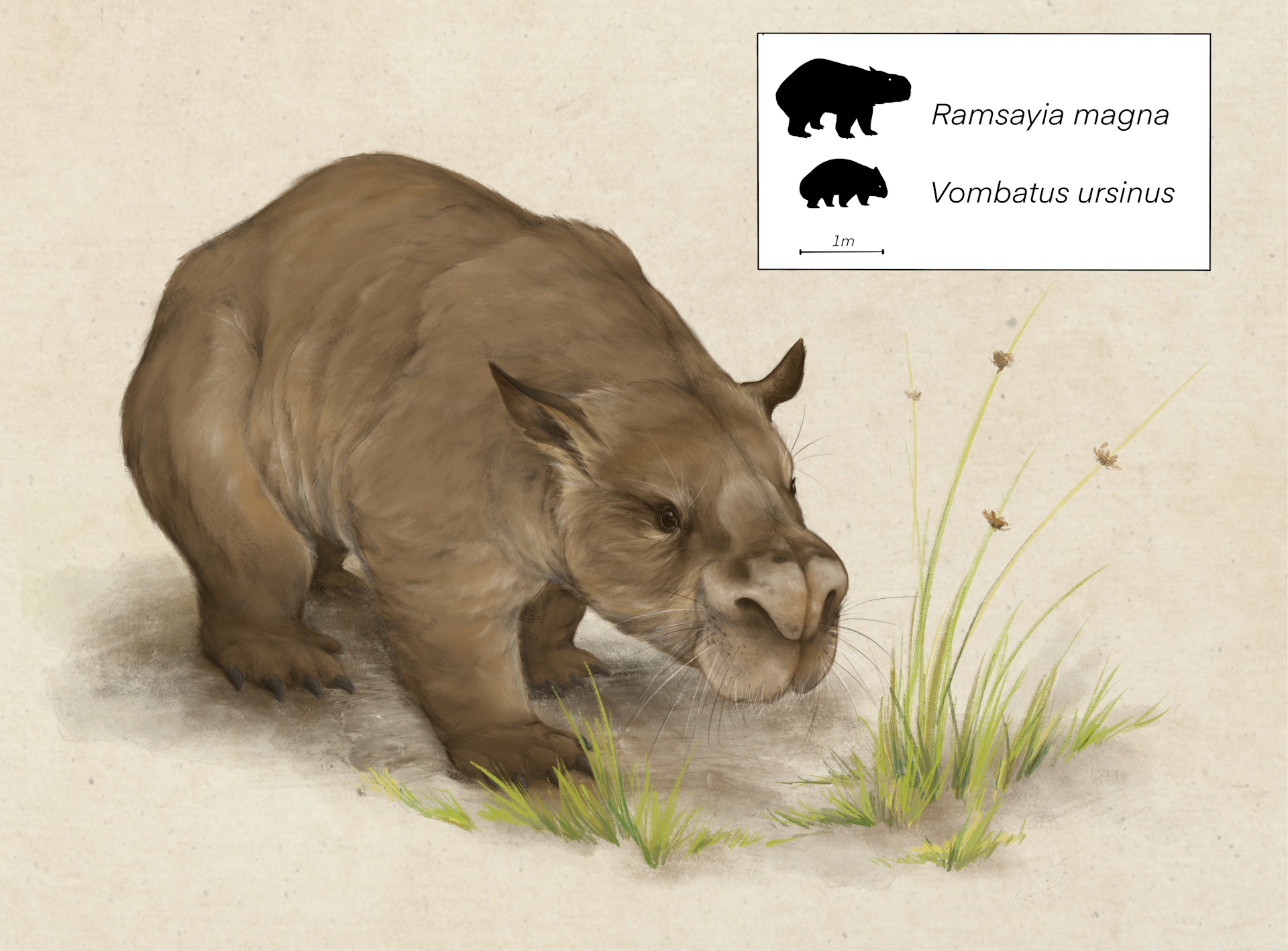
Reconstruction of Ramsayia magna.
Credit: Eleanor Pease, CC BY-NC
Among the charismatic megafauna of Australia, perhaps the best known is the giant marsupial Diprotodon, often referred to as the “giant wombat”.
Contrary to what this moniker suggests, however, Diprotodon is not a wombat at all. Rather, it belongs to a family as distinct from wombats as hippos are from pigs, or as we are from monkeys.
Nevertheless, “true” giant wombats are known from Australia – Phascolonus, the largest, Sedophascolomys, the smallest, and finally Ramsayia, the rarest (roughly cow, goat and sheep-sized, respectively). Ramsayia was previously only known from isolated tooth and jaw fragments.
In the caves of Mount Etna just outside Rockhampton in Queensland, we uncovered a fossil that turned out to represent the most complete remains of this animal ever found. Our detailed anatomical study of this remarkable new specimen revealed what the animal looked like, its unique adaptations to grazing, and the evolutionary history of the giant wombats.
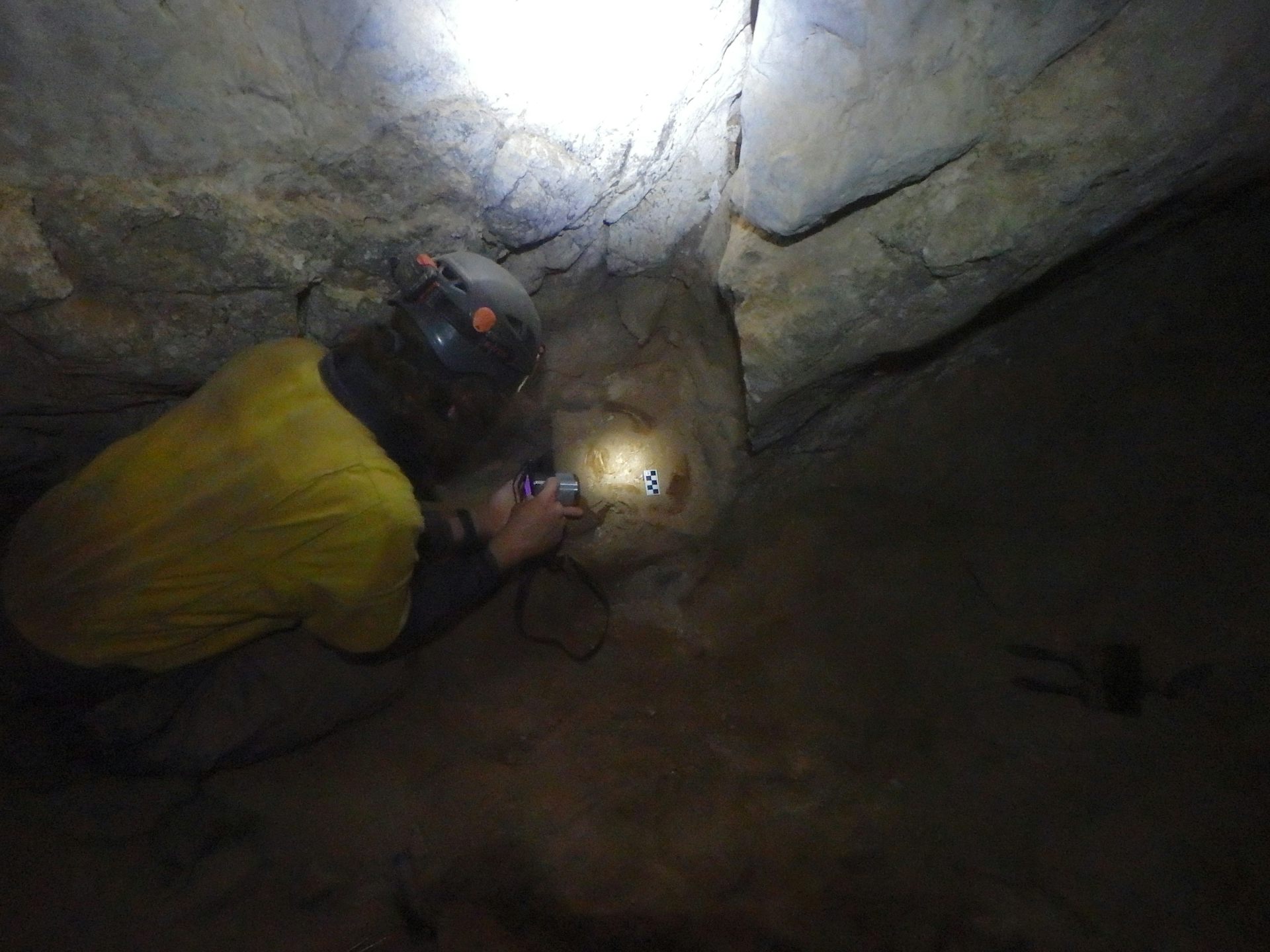
The skull of the giant wombat was found in the caves of Mt Etna, Rockhampton.
Credit: Julien Louys, Author provided
One of the first things we noted about Ramsayia was that the back of its skull preserved evidence of air pockets or sinuses not found in modern wombats.
These sinuses develop for two primary reasons. The outside of a mammal’s skull sometimes grows at a different pace to the brain cavity and the bones that directly surround it. While an animal (and its skull) can reach enormous sizes, its brain size may lag behind; a very large animal doesn’t always need a much larger brain than its smaller relatives.
To accommodate a huge skull and moderately sized brain without adding too much weight, sinuses develop – air cavities supported by bony struts. A larger skull with sinuses also provides more surface area for the attachment of larger chewing muscles, letting the animal process much tougher or poorer-quality foods than smaller species.
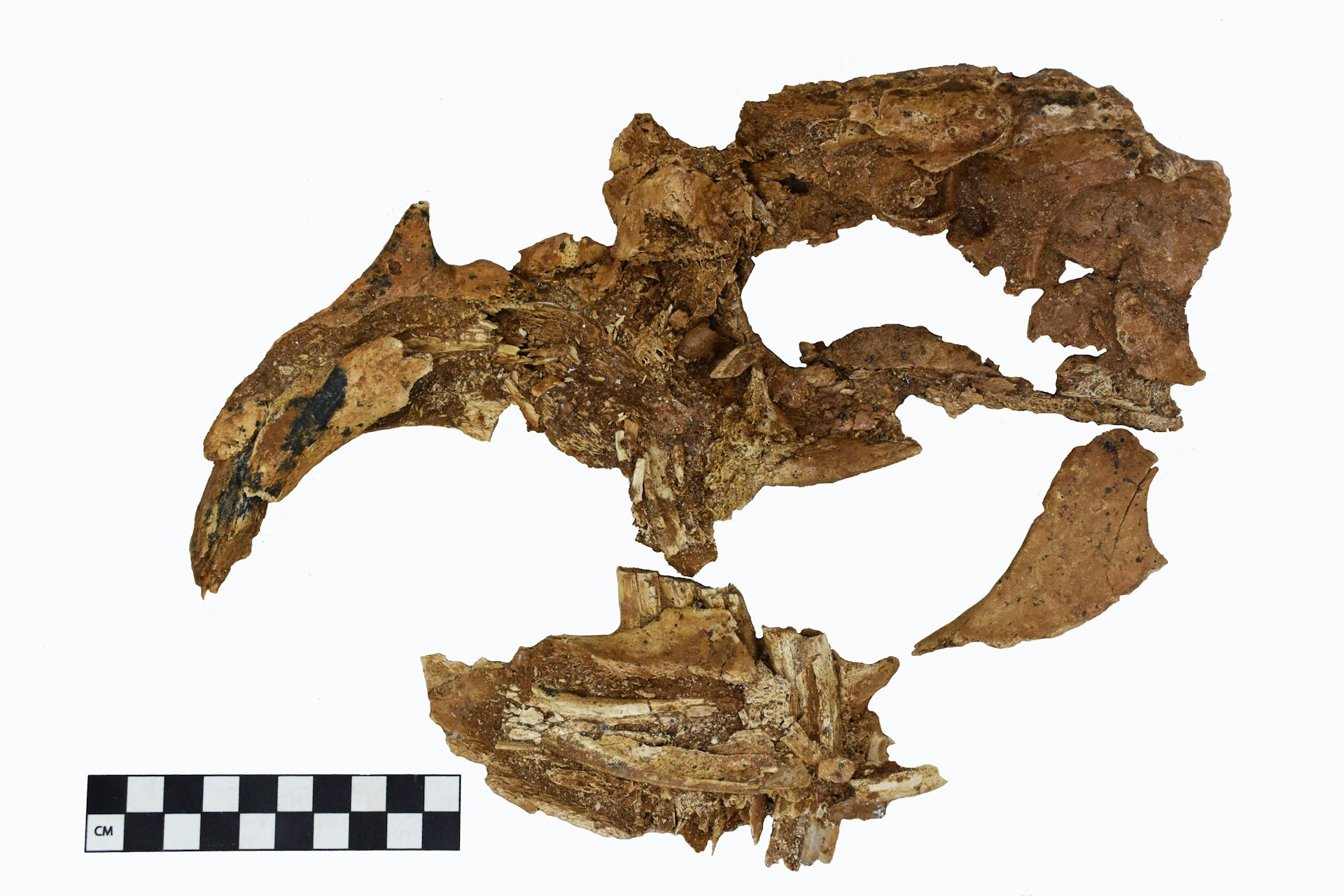
View of the inside of the skull of Ramsayia, showing the development of sinuses in the back of the skull (top right of image) and the distinct ‘premaxillary spine’.
Credit: (Louys et al., 2022), CC BY-NC
They would have given Ramsayia a more rounded head than modern wombats, who have famously flat skulls that may be an adaptation to their underground lifestyle. This could mean Ramsayia did not live in burrows like wombats do today.
Interestingly, cranial material for another giant wombat, Phascolonus, (known for decades but still not studied in detail) suggests the top of its head was “dished-in”. This would indicate that like modern wombats, Phascolonus did not develop these sinuses and they may be unique to Ramsayia.
A sizeable snout
The second major feature we noted was the development of a vertical bony spine where most other marsupials have elongated, horizontal nasal bones.
Called a “premaxillary spine”, it most likely developed to provide structural support for a large fleshy nose: not quite a trunk, but certainly a sizeable nasal appendage. In this regard, as well as in the highly curved shape of its gape (the diastema) and incisors, it closely resembles Diprotodon, as well as giant fossil beavers found in America and Eurasia.
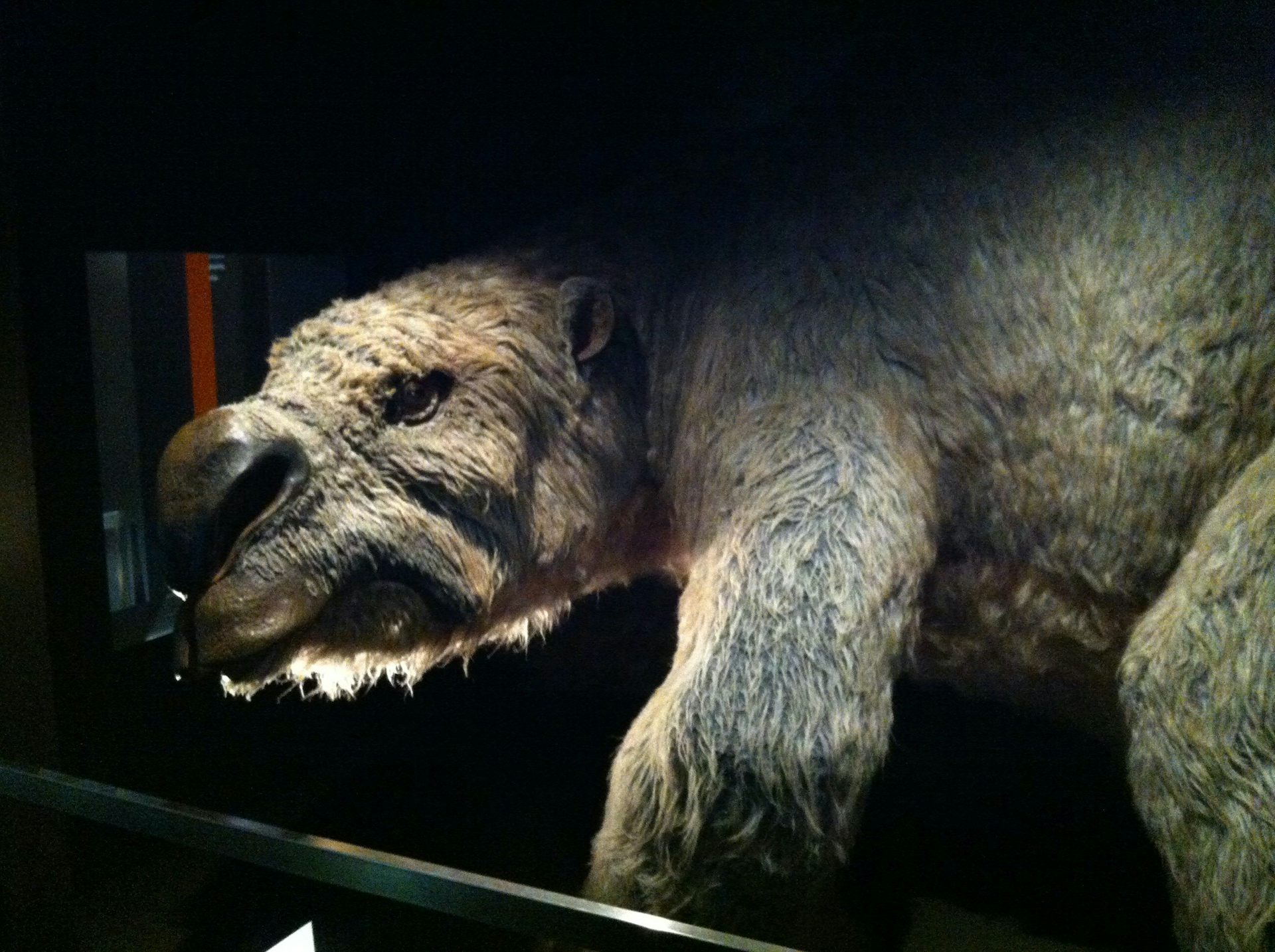
Diprotodon, often incorrectly called the ‘giant wombat’ showing its large, fleshy nose.
Credit: Julien Louys, Author provided
One interesting finding was that all three giant wombats – Phascolonus, Sedophascolomys, and Ramsayia – are more closely related to each other than they are to other extinct and modern wombats. This indicates that gigantism in wombats evolved only once and early in their evolutionary history.
A trend to gigantism was likely in response to the gradual drying out of the Australian continent that started about 20 million years ago and the need to process poorer quality food such as grasses – harder to ingest than leaves and fruits.
A mysterious extinction
To find out the age of the specimen, we used a combination of dating methods known as uranium series and electron spin resonance. These techniques allow us to date beyond the radiocarbon dating window of around 50,000 years.
Our results indicate this individual lived approximately 80,000 years ago in the Rockhampton region. We also found traces of this species even farther north, towards the Chillagoe area. This shows Ramsayia inhabited temperate to tropical grasslands of ancient Australia.
What caused its final extinction? While some have argued the species was wiped out by the arrival of humans, the truth is we don’t yet have enough data to be able to say.
Our paper provides the first ages for this species, and important insights into what it looked like and how it lived. But many more records will be needed to best determine why this giant wombat is no longer with us today.
We thank Eleanor Pease and Ian Sobbe who also contributed to this article.
AbstractIt's scaceley worth mentioning, because this happens with monotonour regularity, but Creationists should note the complete absense of any indication that the TOE is innadequate for explaining the palaeontology here. In fact the authors casually mention how the three genera form a clade with a common ancestor.
Giant wombats (defined here as ≥70 kg) are found in the genera Phascolonus, Ramsayia and perhaps Sedophascolomys. Ramsayia is currently the most poorly known, having been described from mandibular and cranial fragments. Here, we report the most complete cranial remains attributable to the genus, identified as R. magna. The specimen provides new insights into the anatomy of the species and evolutionary adaptations to gigantism in Vombatidae. We record parietal sinuses in a vombatid for the first time, an adaptation to increased skull size relative to the braincase. The presence of a prominent premaxillary spine may indicate that the species possessed a large, fleshy nose. Both features are convergent on other large-bodied, non-vombatid extinct megaherbivores of Australia such as Diprotodon optatum. We use the cranial remains to examine the phylogenetic relationships of giant wombats to other vombatids. Phylogenetic analysis using maximum parsimony and Bayesian inference indicates that Phascolomys, Ramsayia and Sedophascolomys form a clade, suggesting a single origin of gigantism within Vombatidae. This origin may be related to the exploitation of poor-quality foods, and preceded extreme specializations observed in the cranial anatomy of the giant wombats. U-series and combined U-series and electron spin resonance (ESR) dating methods were applied to one fossil tooth. Age calculations systematically correlate the fossil remains to Marine Isotope Stage 5, and an age of c. 80 000 years can be proposed for this specimen. With only a single well-dated occurrence for this taxon, it is currently impossible to determine when and why R. magna became extinct.
Louys, J., Duval, M., Beck, R.M.D., Pease, E., Sobbe, I., Sands, N. and Price, G.J. (2022),
Cranial remains of Ramsayia magna from the Late Pleistocene of Australia and the evolution of gigantism in wombats (Marsupialia, Vombatidae).
Pap Palaeontol, 8: e1475. https://doi.org/10.1002/spp2.1475
Copyright © 2022 the Authors. Published open access by John Wiley & Sons, Inc on behalf of The Palaeontological Association
Reprinted under the terms of the Wiley - Griffith University agreement.
Just another casual refutation of another Creationist lie.




No comments :
Post a Comment
Obscene, threatening or obnoxious messages, preaching, abuse and spam will be removed, as will anything by known Internet trolls and stalkers, by known sock-puppet accounts and anything not connected with the post,
A claim made without evidence can be dismissed without evidence. Remember: your opinion is not an established fact unless corroborated.